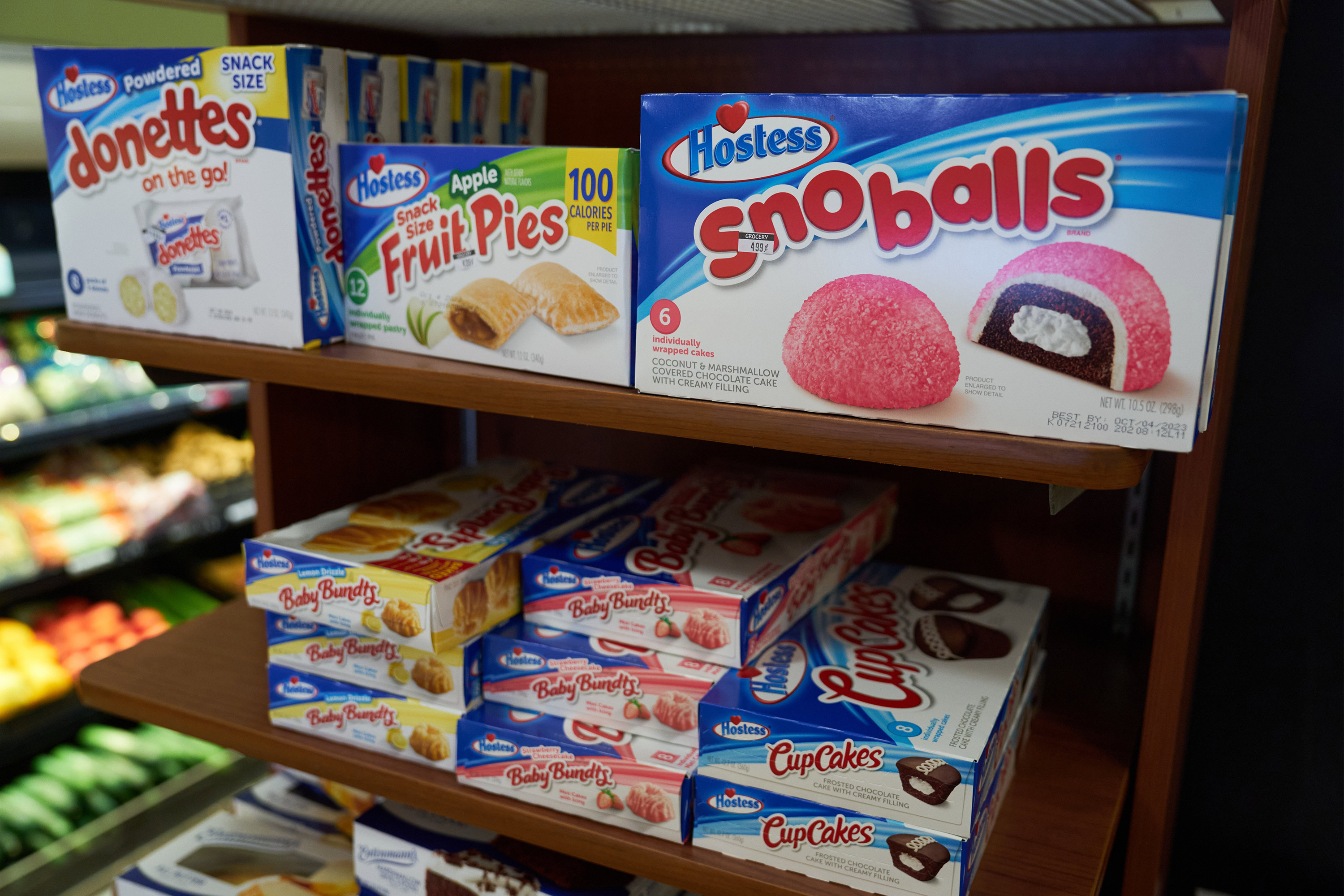
The FDA says front-of-package labels would allow consumers to more easily assess how much sugar, fat and salt packaged foods and drinks contain. d3sign/Getty images hide caption
toggle caption
d3sign/Getty images
The Food and Drug Administration wants to change how packaged food is sold in the U.S. In the waning days of the Biden administration, the agency has proposed requiring a new label on the front of most packaged food and drinks aimed at helping Americans make healthier food choices.
The proposed labels would flag whether a packaged food or drink contains low, medium or high levels of sodium, added sugar and saturated fat, while also detailing the percent of the daily value of these nutrients the product contains.
A large body of research has linked overconsumption of sodium, sugar and saturated fat to chronic diseases including heart disease, cancer and diabetes — the leading causes of disability and death in the U.S. and major drivers of annual healthcare spending, Rebecca Buckner, associate deputy director for human food policy for the FDA's Human Foods Program, said in a media call on Tuesday.
"And yet the vast majority of Americans exceed current recommended limits for all these nutrients," Buckner says.
Salt, sugar and fat are commonly found in high levels in ultra-processed foods to make them taste better and last longer. These foods make up a majority of the typical American diet, but a growing body of research has linked ultra-processed foods to a host of poor health outcomes.
"Food should be a vehicle for wellness, not a contributor of chronic disease," FDA Deputy Commissioner for Human Foods Jim Jones said in a statement. "In addition to our goal of providing information to consumers, it's possible we'll see manufacturers reformulate products to be healthier in response to front-of-package nutrition labeling."

A study of 10,000 U.S. adults showed a black and white nutrition label performed best in helping consumers identify healthier food options. FDA hide caption
toggle caption
FDA
The proposed new label wouldn't replace the nutrition facts label found on the back of packaged foods, but is instead designed to complement it. The FDA says consumers could use the new front-of-package label to more easily compare the healthfulness of various foods at a glance — for example, by looking at two packages of yogurt to see which one has less added sugar.
"We're thrilled about the new front-of-pack nutrition labeling proposal because it will give consumers the information they need to take control of their own health and make healthier purchasing decisions," says Dr. Peter Lurie, president of the nonprofit Center for Science in the Public Interest, which has long advocated for front-of-package labeling.
In 2023 the FDA conducted a study of nearly 10,000 U.S. adults to find out which labels helped consumers make quicker and more accurate assessments of products based on levels of saturated fat, sodium and added sugars. The study showed the black and white labels performed best in helping people identify healthier food options.
But the Consumer Brands Association, formerly the Grocery Manufacturers Association, expressed reservations about the proposed label. "The FDA's proposed rule for front-of-package nutrition labeling appears to be based upon opaque methodology and disregard of industry input and collaboration," Sara Gallo, the vice president for product policy at the industry trade group, said in a statement to NPR. She points out that the food industry has its own voluntary labeling programs, such as the Facts Up Front label, which she says are already "helping consumers make the healthiest choice."
Front-of-package labels have become common in dozens of other countries in recent years. But Lurie notes that in many countries, nutrition labels are used as a warning, appearing only if a food is high in salt, sugar or fat. That's the approach Chile adopted in 2016. Packaged foods sold in Chile now bear a stop sign label on the front noting if they are high in salt, sugar or fat. Research has found that after these labels were adopted, Chilean consumers purchased significantly fewer calories, sugar, saturated fat and sodium than would have been expected if the labels weren't in place.
Lurie would have preferred a warning label approach, but he says the FDA's proposed label is far better than nothing at all.
The nutrition label won't be appearing on packaged foods any time soon. For now, the proposal is open for public comment through May 16. After that, the FDA may choose to make changes to the proposal or finalize the new rule. Once finalized, the FDA says large food manufacturers would have three years to add the new labels, while smaller food manufacturers would have an additional year.
Gallo of the Consumer Brands Association says the food industry group looks forward to working with the incoming Trump administration.
This story was edited by Jane Greenhalgh





















 English (US) ·
English (US) ·